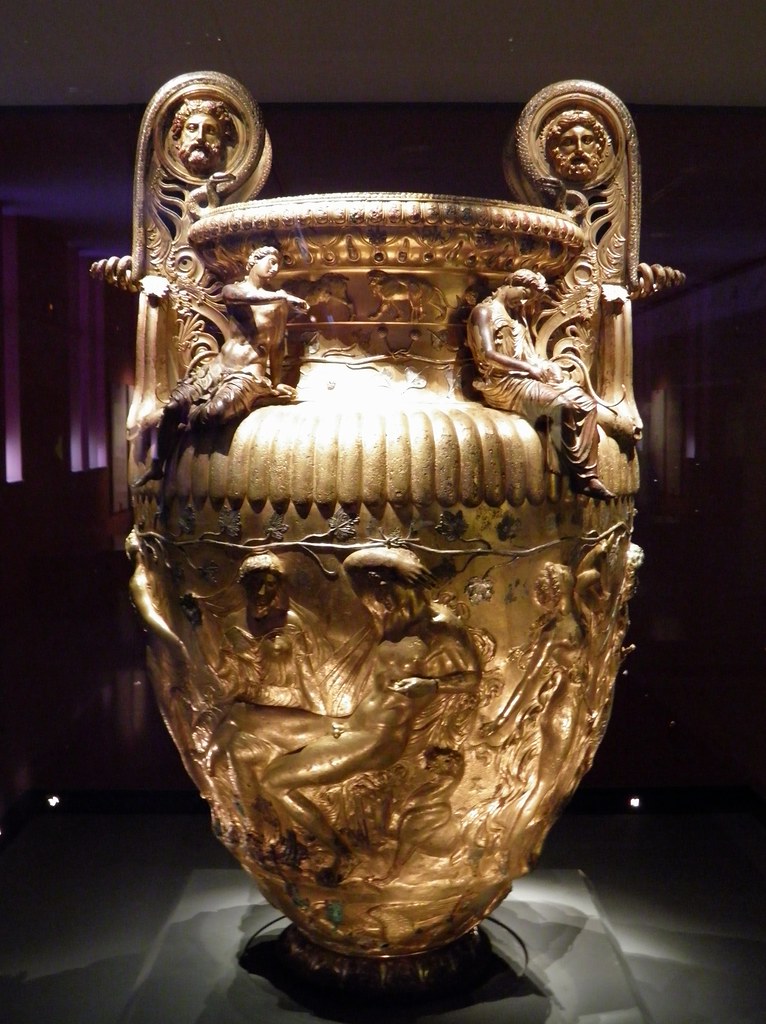


Paul Getty Museum (80–3) and other terracotta reflections of metalwork, including fourth-century Attic black-glazed vessels of various shapes, are introduced.

Barr-Sharrar follows Green in interpreting this to be a metalworkers’ shop rather than a pottery (66–8).Ĭhapter 5, an especially rich section, is titled “Elaborated Volute Kraters of the Late 5th and Early 4th Centuries.” Monuments such as the Attic red-figure dinoid krater in the J. The discussion brings up the famous Attic red-figure hydria by the Leningrad Painter depicting workers engaged in producing vessels.

A backward glance charts the morphological emergence of the A-type handle from the archaic tradition (59–61). Chapter 4 (“Precursors to the Derveni Krater”) discusses fifth-century bronze volute kraters of Barr-Sharrar’s so-called A-type, which she takes to be Attic, and the later adaptations of the handle types in South Italian potteries. This leads to speculation about the involvement of Thessalian families with Macedonia (44–6). Extensive and important new technical documentation is supported by detailed photographs: the mouth is shown to be hammered rather than cast (31), and reason is given to believe that the inscription-in Thessalian dialect and stating Thessalian ownership-could have been added some time after the krater was made (43–4). Chapter 3 (“The Derveni Krater”) brings us to the krater itself. The second chapter (“The Derveni Tombs”) summarizes the group of six tombs discovered north of Thessaloniki in 1962 while paying special respect to Tomb B, in which the Derveni krater was found (18–28). Appearing 30 years after Eugenia Giouri’s fine monograph on the Derveni krater, this is a most welcome addition to a burgeoning literature, the more so when one reflects that this is the first monograph in the English language devoted to a single bronze vessel from the ancient world.Ĭhapter 1 (“Metal Vessels in Macedonian History”) offers an overview of the finds from Sindos, Derveni, and Stavroupolis, which are considered imports (3). The present monograph, which concentrates extensively on a single bronze vessel, follows in a tradition that goes back to Züchner’s Der Berliner Mänadenkrater ( BWPr 98 ) and, more recently, Rolley’s La tombe princière de Vix (Paris 2003). For archaic bronze volute kraters, the work of Rolley and, in particular, Conrad Stibbe has changed the field out of recognition. An initially bewildering mass of loose handles and stray appliqués has slowly yielded secrets to patient classification, so that now these marvelous creations can be understood almost as well as their counterparts in pottery, and their plastic adjuncts and work in repoussé appreciated for the fabulous works of sculpture they can be. In recent decades, Greek bronze vessels have justifiably commanded growing scholarly attention.


 0 kommentar(er)
0 kommentar(er)
